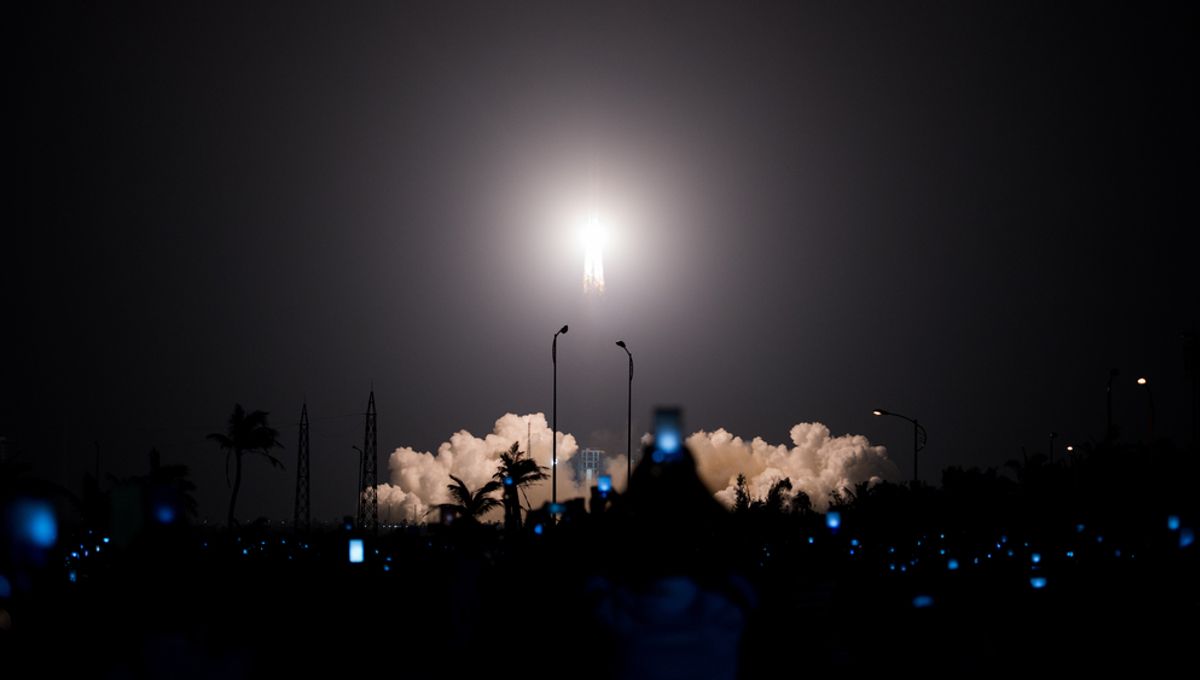
For the fourth time in two years, a giant piece of a Long March 5B rocket is descending to Earth in an uncontrolled fashion. Parts of the rocket could land over much of the planet, with only high latitudes truly safe. Although the chance of debris hitting humans, or even valuable infrastructure, is small for each individual uncontrolled reentry, at some stage our luck will run out.
“For those who’ve been tracking the previous versions of this: Here we go again,” Ted Muelhaupt of The Aerospace Corporation said during a briefing.
The rogue rocket was used to launch the third module of the Tiangong space station on Monday. Known as Mengtian, translated as “Dreaming of the Heavens,” the final component of the station will host experiments and scientific equipment, rather than crew compartments like the original Tianhe module. It reportedly docked on Tuesday.
The 22.5 tonne rocket is projected to enter the atmosphere in the early morning of November 5. That could make for some spectacular fireworks in a part of the world that celebrates bonfire night, but there is still too much uncertainty over the timing to predict where. However, the rocket’s orbit does not take it much more than 40 degrees from the equator, so the 12 percent of the global population living at higher latitudes in either hemisphere are safe.
Muelhaupt estimates the risk of casualties is somewhere between one in 1,000 and one in 230 (0.1-0.4 percent). The Interagency Debris Coordination Committee is trying to get spacefaring nations to keep such risks below one in 10,000 but has no power to enforce this.
In May 2021, a Long March 5B rocket splashed down in the Indian Ocean around 300 kilometers (186 miles) southwest of the Maldives. Then in August this year, another booster rocket came down over southeast Asia. Although the bulk of the rocket hit the sea between Vietnam and the Philippines some pieces landed on Borneo. This still wasn’t as dangerous as the May 2020 landing of part of a 5B rocket near two villages in the Ivory Coast.
A report in Nature Astronomy estimated a 10 percent chance of someone being killed by re-entering space junk in the next decade. However, that figure was based on what appears to be a conservative projection of the number of launches, so the likelihood is probably higher.
Both the US and Russian space agencies have had former satellites hit land after losing control, both fortunately in thinly populated areas. More recently, a Space X cargo trunk was strewn over Australian farms.
However, uncontrolled re-entry by Long March 5B vehicles is so common the Chinese Space Agency appear to be making little or no effort to avoid such events.
When the last uncontrolled re-entry occurred, Professor Brad Tucker of the Australian National University noted to IFLScience that there is very little way for the world to enforce rules on safe rocket and satellite disposal. If damage occurs to life or property, it will be up to China whether it pays compensation. Unless they live in a country China wishes to keep onside, victims will likely have little recourse.
Still, as individuals, we are a lot safer from space debris anywhere on the Earth than the inhabitants of the International Space Station. The ISS once again had to take evasive action last week to avoid pieces of the satellite Russia blew up last year.
Source Link: Another Long March Rocket Set For Uncontrolled Crash Landing